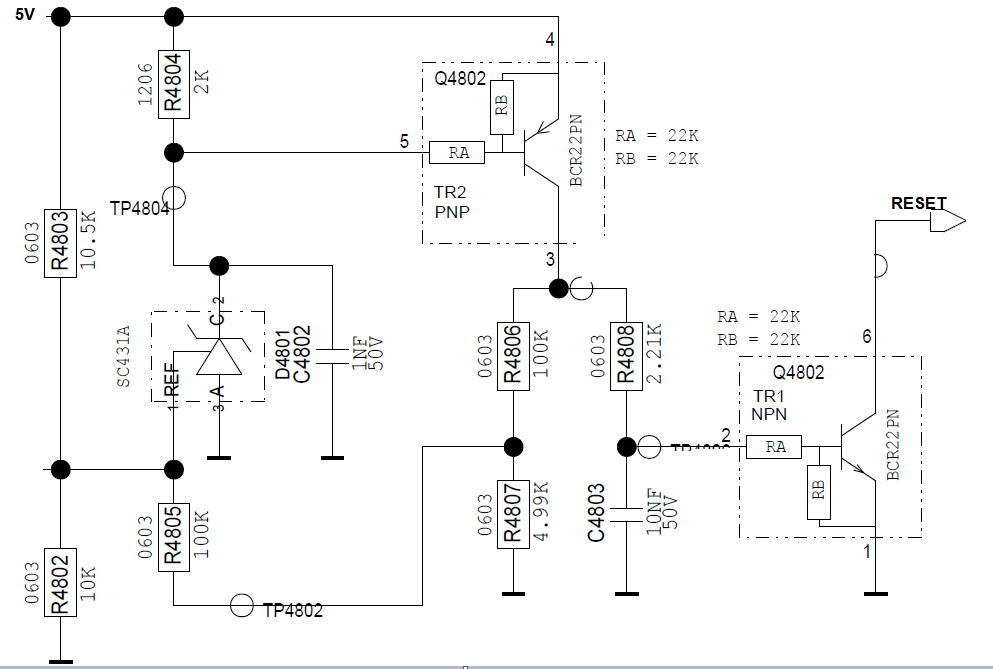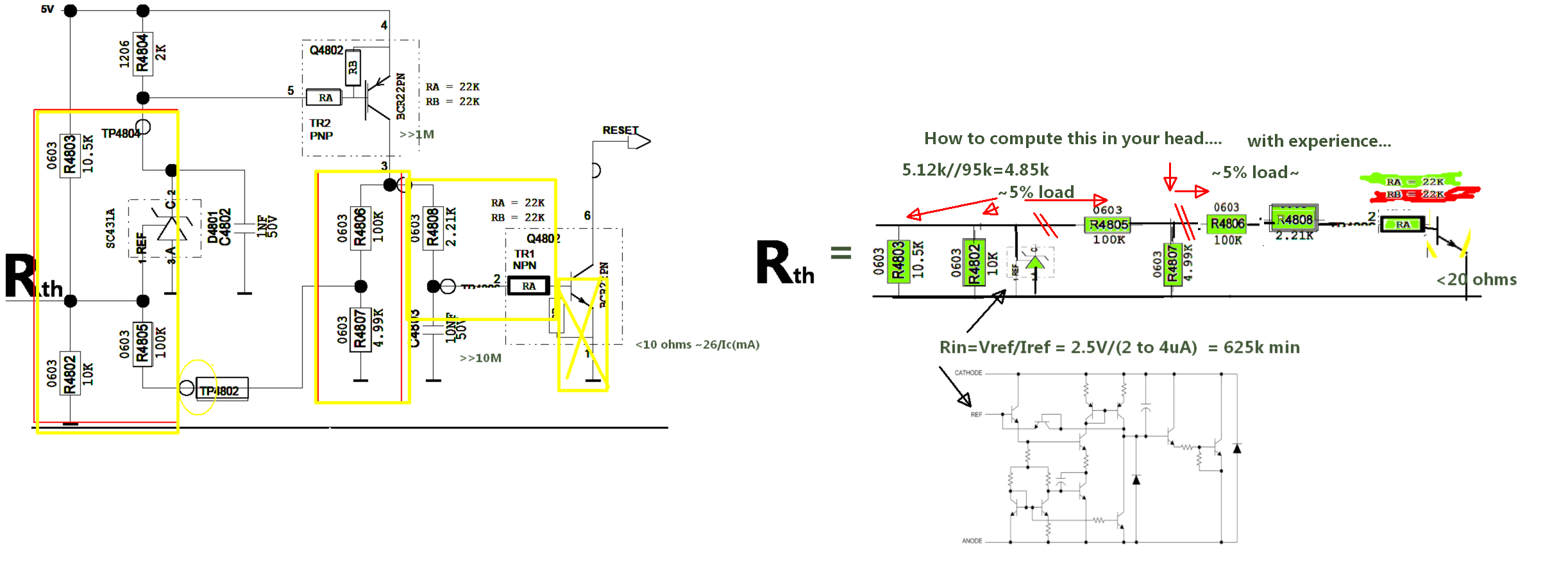I have this circuit:
The effective resistance at the reference node of D4801 is given as
Rb = R4802||(R4805+(R4807||(R4806+R4808+44KOhm))) = 9.129KOhm
I am not able to understand how this formula is arrived.
Shouldn't it be, Rb = R4802||(R4805+((R4806+R4807)||R4808+44KOhm)))
Please tell me how the first Rb is correct and the above is incorrect?
How should we factor or consider the R4806 resistor into this formula? I find it confusing on how to include the R4806 and R4807 into the effective resistance formula.
Any tips on how to find a easy way in these type of circuits?


